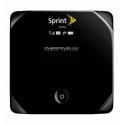Sprint 4G Overdrive Review
 The type of work I do requires me to have an internet connection available all the time. As a result, I've tested a variety of broadband data plans for the past 5 years. My latest foray into broadband is the Sprint Overdrive 4G service. When it operates in 4G mode, Sprint Overdrive is a dramatic improvement over the 3G offerings from Verizon, Sprint, ATT and T-Mobile. While 4G is priced the same as comparable 3G services and falls back to 3G when no 4G is available, there are a number of things about the 4G data plan that could be better.
The type of work I do requires me to have an internet connection available all the time. As a result, I've tested a variety of broadband data plans for the past 5 years. My latest foray into broadband is the Sprint Overdrive 4G service. When it operates in 4G mode, Sprint Overdrive is a dramatic improvement over the 3G offerings from Verizon, Sprint, ATT and T-Mobile. While 4G is priced the same as comparable 3G services and falls back to 3G when no 4G is available, there are a number of things about the 4G data plan that could be better.
One of the key problems I see with the way the Overdrive service works is a less than graceful fall back to 3G. On numerous occasions, I have been connected to 4G, moved out of range of a 4G connection, and waited between 90 seconds and 2 minutes before I was able to reconnect to a 3G service. 2 minutes may not sound like much, but if you're trying to get an email out or waiting for a website to load, 2 minutes is an eternity. Making this fail-over more graceful is a must for this to be a win from a user experience standpoint.
The second major shortcoming I see is with the hardware. It takes too long to turn on. I love that the Sprint Overdrive hardware has a battery and doesn't need to be plugged in to my laptop for me to connect, similar to the MiFi hardware. It also allows me to connect up to 5 devices via WiFi. Because there's a battery, I feel the need to turn off the device when it's not in use to make sure I have as much battery life as possible. Overdrive takes longer to boot and acquire a connection than Windows. Getting closer to instant on, with the connection happening quickly makes this more of a win. I know I could leave the hardware on all the time, but early tests with that approach left me with a dead battery at the time I actually wanted to connect to the Internet.
Another pain point is the time it takes to switch the mode of the Overdrive. I keep it set in 4G preferred mode, which allows it to fall back to 3G service when no 4G connection is present, but that results in the 2 minute wait time I expressed above. A slightly faster approach is to set the device to 3G preferred mode in my preparation to move out of a 4G coverage area. This is an acceptable alternative, but the reboot time to go from 4G to 3G is fairly lengthy.
Having noted those negatives, I still recommend Overdrive over competing mobile broadband options. Simply put, If you need a mobile data plan, buying Overdrive makes sense. The price is comparable to 3G offerings, with the added speed boost of 4G where available. If you keep the device in 3G mode in places where you don't have access to 4G, the connection time is quick. Having the 4G option builds in some future proofing against the life of the 2-year contract you are required to sign, because I guarantee 4G access will be distinctly different in 2011 than it right now.
And if you're shopping for a data plan, Amazon currently has the best deal on Sprint Overdrive, at $49.00 for the Overdrive hardware with a contract.